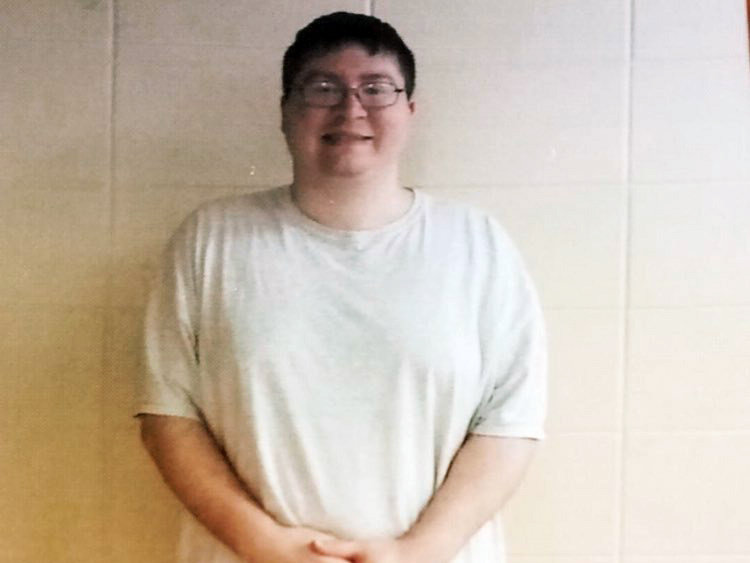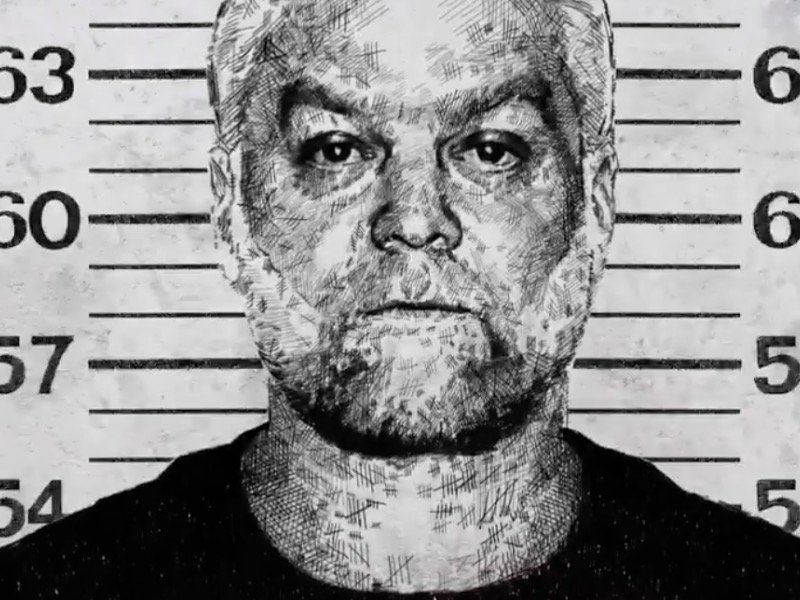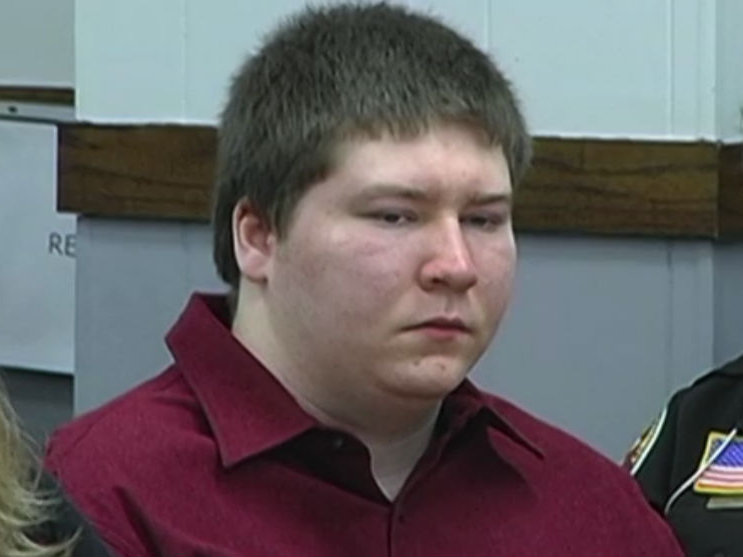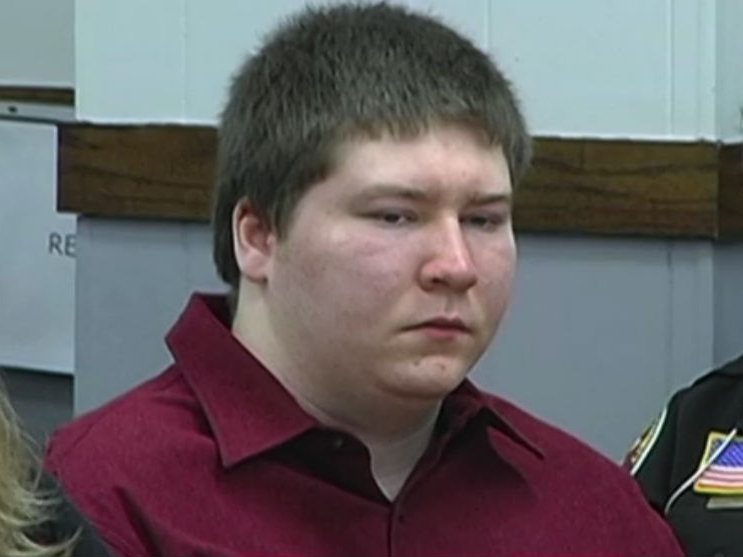For more "Making a Murderer" coverage, including the case's unanswered questions and evidence against Avery the series left out, click here.
When binge-watching Netflix’s fascinating series "Making a Murderer," it became clear that there was one glaring angle left out: If Steven Avery (and Brendan Dassey) didn’t do it, who did? The documentary barely mentions alternative suspects.
A review of court records shows that Avery’s defense attorneys tried to raise details about four other possible suspects at trial, but the judge – and later the appellate court – wouldn’t let them.
The court documents show other people with unsavory criminal histories – including against women – had easy access to the salvage yard property where Teresa Halbach disappeared. But the defense wasn’t allowed to tell the jury about them.
The filmmakers largely dodged this point, only making the most subtle of allusions to it. Of course, they needed the cooperation of the Avery family in order to run all of that inside footage and some alternative suspects had ties to the family itself. The details wreck the rosy narrative of the homespun, salt-of-the-earth clan, but it makes the actual story far more interesting.
Although the defense attorneys claimed at trial that Manitowoc County law enforcement officers planted evidence (which the officers and prosecution deny), they stated that they didn’t think the officers murdered photographer Teresa Halbach. Rather, they alleged that the law enforcement officers planted evidence to strengthen a case against a guy they thought was already guilty: Steven Avery, who had served 18 years in prison for a previous sexual assault he didn’t commit, a case in which some of those same officers were involved. Yet the documentary focuses mostly on the law enforcement officers, not delving deeply into the backgrounds of others whom the defense wanted to argue might have done it.
The cops were not among the four alternative murder suspects presented by the defense in the motion denied by the judge. The only alternative suspect the judge would allow the jury to hear about was his 16-year-old nephew Brendan Dassey, who had confessed – and then repeatedly unconfessed – but Avery did not choose to blame Dassey at trial. He also was not among the four.
As I wrote in a previous column, the 10-part series – built on a mountain of video, audio and documentary evidence – raises deeply troubling questions about the actions of law enforcement officers and the earlier defense team of Dassey all the same. I became convinced the cognitively challenged Brendan Dassey deserves a new trial (there is a motion pending in federal court to get him one). I remain less certain about Avery. Did he do it, as a jury concluded? He might have. However, I am less sure than I was before. If you don’t agree, at least watch the series first.
I am even less sure that Avery did it after reading the court documents on other potential suspects. Curious as to the lack of alternative suspect theories in the documentary, I looked up court documents from the appeal. It’s a rogue’s gallery, and while Internet sleuths on sites like Reddit are making a lot of other angles, such as the defense contention that some of Halbach's voicemails were deleted and authorities didn't look closely enough at some of those close to her, the court documents show the defense wanted to point the finger at people around Avery.
Here are summaries of the four alternative suspects raised most thoroughly by the defense. The details are allegations that come directly from court documents, including the appellate decision and a 2009 post-conviction motion filed in court by the defense.
Person 1
 According to the defense motion, Person 1 had a violent and volatile personality. His co-workers allegedly described him as a short-tempered angry person capable of murder. He was allegedly described as a chronic liar who blows up at people, "screams a lot" and is a "psycho." He had been previously charged in 1994 with criminal trespass and battery. The criminal complaint alleged he went to a woman’s home at 3 a.m. and knocked on her bedroom window. Then he allegedly walked into her home and stated, "You will die for this, b-tch." He then allegedly knocked a man with the woman unconscious.
According to the defense motion, Person 1 had a violent and volatile personality. His co-workers allegedly described him as a short-tempered angry person capable of murder. He was allegedly described as a chronic liar who blows up at people, "screams a lot" and is a "psycho." He had been previously charged in 1994 with criminal trespass and battery. The criminal complaint alleged he went to a woman’s home at 3 a.m. and knocked on her bedroom window. Then he allegedly walked into her home and stated, "You will die for this, b-tch." He then allegedly knocked a man with the woman unconscious.
Three years later, he was charged with recklessly causing bodily harm to another male, as well as disorderly conduct and damage to property. He allegedly swung at a woman, pushed her down basement stairs, pulled her hair and punched an 11-year-old and then damaged property.
In 1998, he was charged with trespass and disorderly conduct for allegedly entering his mother’s home without permission. He allegedly shoved her and called her vile names. In 2001, a woman filed a petition for a temporary restraining order against the man, alleging he threatened her repeatedly, spit on her car and pushed his way into her home. In 2001, he allegedly assaulted the woman again, shoving her and punching her. This man had easy access to the salvage yard property, and admitted he was on it twice on the day that Halbach disappeared. His alibi in the case was one of the other people on the alternative suspect list.
He claimed he left the property to go hunting. A co-worker allegedly reported the man approached him to sell a .22 rifle. A .22 rifle was believed to be the murder weapon in the case. A co-worker allegedly stated the man left work on the day Steven Avery was arrested and was a "nervous wreck" and had commented that one of the other people had blood on his clothes and that the clothes had "gotten mixed up with his laundry."
I looked this man up on CCAP, the state’s court website. His last criminal case was a conviction in 2002 for disorderly conduct. He was also convicted of the following cases, per CCAP: 1998 of criminal trespass to dwelling; 1997 for disorderly conduct; battery in 1997; and battery in 1995.
Person 2
 According to the defense motion, the second person had allegedly "assaulted his former wife and had an aggressive history with women who came to the Avery Salvage Yard." In 1999, this man was charged with sexual assault with use of force for a case involving his then wife. The criminal complaint stated that she also reported he had tried to strangle her with a phone cord and told her that, "If she did not shut up he would end it all." In another criminal complaint filed the same day, she alleged he had violated a domestic abuse injunction, entering her residence without permission, ripping the phone from her hands when she tried to call the police and blocking the door.
According to the defense motion, the second person had allegedly "assaulted his former wife and had an aggressive history with women who came to the Avery Salvage Yard." In 1999, this man was charged with sexual assault with use of force for a case involving his then wife. The criminal complaint stated that she also reported he had tried to strangle her with a phone cord and told her that, "If she did not shut up he would end it all." In another criminal complaint filed the same day, she alleged he had violated a domestic abuse injunction, entering her residence without permission, ripping the phone from her hands when she tried to call the police and blocking the door.
The defense motion says that the Sheriff’s Department interviewed a woman who had business on the property and who allegedly said the man had started to send her flowers and repeatedly asked her to go on dates, "which she found disturbing." He allegedly sent candy to her home. She allegedly told her co-workers she was afraid of him. Another woman allegedly said she had a similar experience. The defense alleged there was jealousy between this man and Steven Avery.
Avery’s girlfriend had allegedly stated that she was afraid of this man because he had allegedly come to Avery’s home with a shotgun because he was angry they were dating. She allegedly said she awoke once to find him in her residence.
He was on the property regularly. He had allegedly asked Steven Avery if "the photographer" had come to the yard the day she disappeared, according to another man. He allegedly told law enforcement that he recalled Steven may have left work to "go and meet with a girl to take some pictures." He allegedly had no alibi for the night. He is a hunter with access to guns.
According to CCAP, this man was found guilty in the following cases: violating a domestic abuse injunction in 1999; of bail jumping in 1999; and of disorderly conduct in 1998. He also entered into a deferred prosecution agreement for a third-degree sexual assault charge that resulted in it being dismissed. In 1999, a restraining order was issued against him.
Person 3
 According to the defense motion, Person 3 had been charged in 1995 with sexually assaulting two relatives. He was allegedly hunting rabbits with a gun the day Halbach disappeared, had been riding around the property on a golf cart, and had easy and regular access to the property. The defense claimed that a cadaver dog alerted on part of a golf cart on the property. According to the defense, this man allegedly knew Halbach was coming to the property. When police came to take a DNA sample of this man, he allegedly hid in an upstairs bedroom under clothes.
According to the defense motion, Person 3 had been charged in 1995 with sexually assaulting two relatives. He was allegedly hunting rabbits with a gun the day Halbach disappeared, had been riding around the property on a golf cart, and had easy and regular access to the property. The defense claimed that a cadaver dog alerted on part of a golf cart on the property. According to the defense, this man allegedly knew Halbach was coming to the property. When police came to take a DNA sample of this man, he allegedly hid in an upstairs bedroom under clothes.
According to CCAP and news reports, this man was later charged criminally with setting up hidden cameras in his house to photograph women (several years after the defense post-conviction motion and well after Avery’s conviction). According to a news report from 2012, he was "accused of videotaping people in various stages of nudity" at his home, including a teenage girl and adult women and small children, both boys and girls – including two girls as young as 3. According to a news account, the criminal complaint said he tried to burn the tapes.
According to CCAP, he was convicted of two misdemeanor counts of invading privacy by using a surveillance device. He was sentenced to six months in jail and two years of probation. According to CCAP, he was also previously convicted of battery and fourth degree sexual assault in 1995.
Person 4
 According to the defense motion, the final alternative suspect the defense was focusing on allegedly admitted to being on the property at the time Halbach showed up. His alibi was Person 1, as they both stated they saw the other leave the property to go hunting at that time. He allegedly admitted he saw Halbach on the property before he went hunting. He allegedly told police the first person would be able to "verify precisely what time he had seen" him. "He did not explain why that time would be so important" that the first man would remember it so precisely, the motion says. Also, Person 4 allegedly stated he had taken a shower both before and after returning from hunting. "A physical examination of (Person 4) allegedly showed that he had scratches on his back. He told law enforcement that the scratches were from a puppy." A doctor stated it was unlikely they were over a week old. CCAP shows no entries for this man.
According to the defense motion, the final alternative suspect the defense was focusing on allegedly admitted to being on the property at the time Halbach showed up. His alibi was Person 1, as they both stated they saw the other leave the property to go hunting at that time. He allegedly admitted he saw Halbach on the property before he went hunting. He allegedly told police the first person would be able to "verify precisely what time he had seen" him. "He did not explain why that time would be so important" that the first man would remember it so precisely, the motion says. Also, Person 4 allegedly stated he had taken a shower both before and after returning from hunting. "A physical examination of (Person 4) allegedly showed that he had scratches on his back. He told law enforcement that the scratches were from a puppy." A doctor stated it was unlikely they were over a week old. CCAP shows no entries for this man.
The trial judge refused to allow the defense attorneys to present the evidence of other suspects during trial. This was a key argument made by Avery’s appellate attorneys, who argued it was unfair and that the case should be overturned on appeal. The state called some of the above people to offer evidence against Avery. The defense argued Avery’s attorneys should have been allowed to question whether they were offering it to hide their own possible culpability.
Without viable alternative suspects presented in the documentary narrative, viewers were left to wonder: If Avery didn’t do it, why would Halbach’s bones have ended up in a burn pit on the salvage yard property where he lived? After all, he was the last known person to see her alive, because she was photographing a van on the property.
Who else could have done it?
Implausibly, none of Halbach’s blood or fingerprints was found in Avery’s house or garage (where the prosecution claimed she was killed). Her DNA was found on a bullet discovered in the garage months later by a member of the sheriff’s agency that had said it'd handed the case over to others (and only after other searchers had not seen it). There were also burnt bones that might have been Halbach’s found a ways away from the property in addition to in the burn pit.
The Wisconsin Court of Appeals ruled that the trial judge was right to not allow the alternative suspect theories, using a 1984 case called State v. Denny. The legal terminology is called third-party liability. According to the Court of Appeals, to meet the Denny standard for admittance of such third-party liability, the defense would have had to establish that the alternative suspects had motive, opportunity and a direct connection to the crime.
The court basically found that Avery could show a variety of others had opportunity but did not establish motive or any direct link to the crime by the people above.
"The parties identified by Avery may have had the opportunity to commit the crime; however, Avery was unable to demonstrate that any of the named individuals had a motive to commit the alleged offenses against Halbach," the appeals court said in denying Avery’s bid for a new trial.
The court noted that the trial judge had found that, "Avery offered no physical or other evidence connecting any of the individuals to the crime, other than their presence in the general vicinity. One can only imagine how much longer this six-week trial would have lasted had the court granted (Avery’s) request to introduce third-party liability evidence … "
And of course, the prosecution alleged it had found physical evidence linking Steven Avery to the crime: his blood in Halbach’s car, found on the property; his DNA on Halbach’s key, found in his bedroom; and Halbach’s DNA found on a bullet in his garage. This is the evidence the defense attacked as planted.
The defense points out that Manitowoc County Sheriff’s Department officers found the key and bullet only after repeated searches by others did not turn them up. The officer who found the key had just been deposed in Avery’s wrongful conviction civil suit. That agency had supposedly handed the case over to others. They also showed that a vial of Avery’s blood from his previous wrongful conviction case was retained as evidence, that the seal on the evidence packet was broken, and that a small hole was pierced in the top of the blood vial.
Frankly, it’s hard to see what motive Avery himself had other than perhaps impulsive sexual deviancy. His life was going well at that point in time; he was poised to possibly win a multi-million-dollar civil lawsuit, he had become a cause celebre of Wisconsin politicians and he had a girlfriend.
It’s clear the defense wanted to argue someone else on the property at least could have done it, and that the cops – thinking Steven Avery was the guilty party or wanting others to do so – planted the evidence pointing instead at him. Instead, they only got to argue half of that to the jury.
All very curious.
Jessica McBride spent a decade as an investigative, crime, and general assignment reporter for the Milwaukee Journal Sentinel and is a former City Hall reporter/current columnist for the Waukesha Freeman.
She is the recipient of national and state journalism awards in topics that include short feature writing, investigative journalism, spot news reporting, magazine writing, blogging, web journalism, column writing, and background/interpretive reporting. McBride, a senior journalism lecturer at the University of Wisconsin-Milwaukee, has taught journalism courses since 2000.
Her journalistic and opinion work has also appeared in broadcast, newspaper, magazine, and online formats, including Patch.com, Milwaukee Magazine, Wisconsin Public Radio, El Conquistador Latino newspaper, Investigation Discovery Channel, History Channel, WMCS 1290 AM, WTMJ 620 AM, and Wispolitics.com. She is the recipient of the 2008 UWM Alumni Foundation teaching excellence award for academic staff for her work in media diversity and innovative media formats and is the co-founder of Media Milwaukee.com, the UWM journalism department's award-winning online news site. McBride comes from a long-time Milwaukee journalism family. Her grandparents, Raymond and Marian McBride, were reporters for the Milwaukee Journal and Milwaukee Sentinel.
Her opinions reflect her own not the institution where she works.







